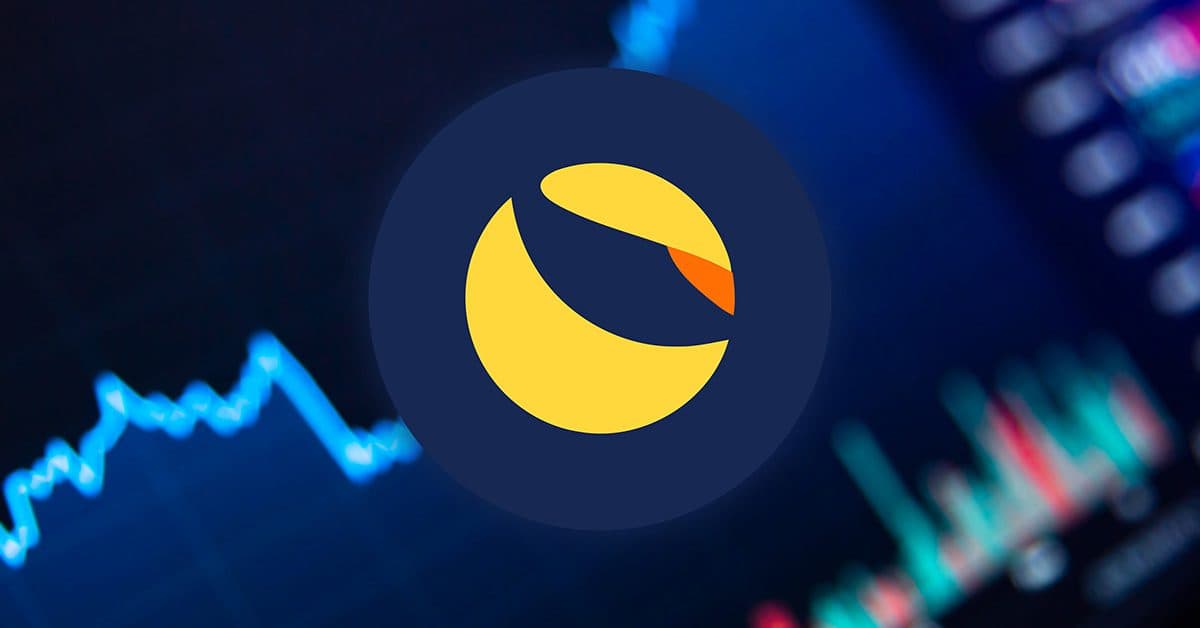Terra’s Columbus-5 Sets Sail, Here’s What to Expect
The highly anticipated Columbus-5 upgrade brings the UST stablecoin into the Cosmos ecosystem and could impact prices of $SOL, $DOT and $ATOM.

Terra LUNA Cryptocurrency. Bitcoin coin growth chart on the exchange, chart; Source: Shutterstock
- Terra’s inter-blockchain communication (IBC) integration is expected to increase the adoption of its stablecoin, TerraUSD (UST), throughout the Cosmos ecosystem
- Upgrades include increased transaction speed and rewards for stakers, adjustments to burning mechanisms, and a bridge for UST between Terra and Solana
The Terra network has undergone a successful upgrade today, known as Columbus-5, a significant milestone in the protocol’s history. The upgrade to Terra will introduce a number of changes, chief among them, the adoption of inter-blockchain communication (IBC) which will connect Terra-based assets to the Cosmos ecosystem.
IBC will also create a bridge between the Cosmos ecosystem and the Terra, Solana ($SOL) and Polkadot ($DOT) blockchains. Ethereum will be added to that list soon. Overall, about 250 decentralized applications (dApps) will potentially be added to the ecosystem.
The ability for Terra’s stablecoin, TerraUSD ($UST), to move freely between IBC-connected blockchains is expected to drive demand by fuelling economic activity in DeFi for those that currently lack a USD-pegged stablecoin. For instance, the Cosmos hub, which connects about a dozen blockchains through IBC, currently does not have a USD-pegged stablecoin available for use in its applications, although a stablecoin pegged to the euro recently debuted.
Columbus-5 also takes advantage of prior upgrades to Cosmos dubbed Stargate which, in addition to IBC, included improvements to performance — promising efficiency gains of 10x to 100x — and developer tools, such as wider support for programming languages.
Banking on UST
Terra’s $UST is known as an algorithmic stablecoin that uses a process referred to as seigniorage, which means that to mint (create and put into circulation) new units of $UST, the equivalent dollar amount of Terra’s native token, $LUNA, must be burned (removed from circulation).
However, the system works both ways. If demand for $UST begins to decline, then $LUNA will be minted while $UST is burned, which theoretically allows it to keep its value stable at around $1.
As demand for $UST increases, it begins to trade at a premium and arbitrageurs purchase $LUNA on an exchange and burn it for $UST to capture that spread and bring the peg back down to $1.
On the other hand, as demand for $UST declines and trades at a discount, arbitrageurs can redeem their $UST for $LUNA in order to return the peg back to $1.
There are many new projects set to launch on Terra post Columbus-5, with names like Ozone, Orion Money, Mars Protocol, Nebula Protocol, Levana Protocol, Alice and Astroport. This will presumably increase demand for $UST (which in turn deflates the $LUNA supply) as these projects seek to bootstrap liquidity by distributing their own reward tokens.
Feeling the burn
Prior to Columbus-5, a large portion of burned $LUNA would be rerouted to a community pool and the remainder would be burned. After Columbus-5, the community pool portion will be entirely burned as well, thus reducing the total supply.
Terra’s Tendermint-based proof-of-stake consensus mechanism requires that transactions are processed by a set of 130 validators (later this number will rise to 300). Holders of $LUNA can opt to delegate their tokens to one or more validators of their choosing, helping to secure the network and, in the process, earning a reward. Columbus-5 will increase those incentives.
Swap fees generated from the Terra Station wallet — Terra’s equivalent to the popular Metamask app and browser extension — which contains a built-in decentralized exchange, will now be distributed to stakers as well, rather than being burned.
Members of the Terra community (known as LUNAtics) are hoping this will lead to more of the supply becoming locked in the protocol — a 28-day unbonding period is imposed before delegators can withdraw their stake.
Not your regulator’s stablecoin
TerraUSD, as an algorithmic stablecoin, isn’t backed by anything. Its stability is a function of the supply, demand and arbitrage. These types of stablecoins are experimental and highly controversial. If any of these stability factors cease to exist, the value of $UST and $LUNA could quickly deteriorate.
Earlier this year, during the May 19 to May 23 crash, $UST survived a crisis when the price of $LUNA fell by 75% over the space of three days and the stablecoin briefly lost its peg. Since then, the protocol has added more stability mechanisms, while the variance of $UST from a dollar overall has declined.
Another risk is potential regulation. Gary Gensler, Chairman of the SEC, recently said that “These stablecoins are acting almost like poker chips at the casino right now.” The pending regulatory action surrounding stablecoins, particularly algorithmic stablecoins, is unknown.
The Federal Reserve has also been keeping a close eye on the stablecoin market. It has become abundantly clear regulators want investors to tread carefully.
At time of publication, $LUNA has a market cap of roughly $14 billion and $UST has a market cap of roughly $2.7 billion, according to CoinGecko, making them the 12th and 57th largest cryptocurrencies respectively.
This story was updated on September 30, 2021, at 7:07 AM ET.






